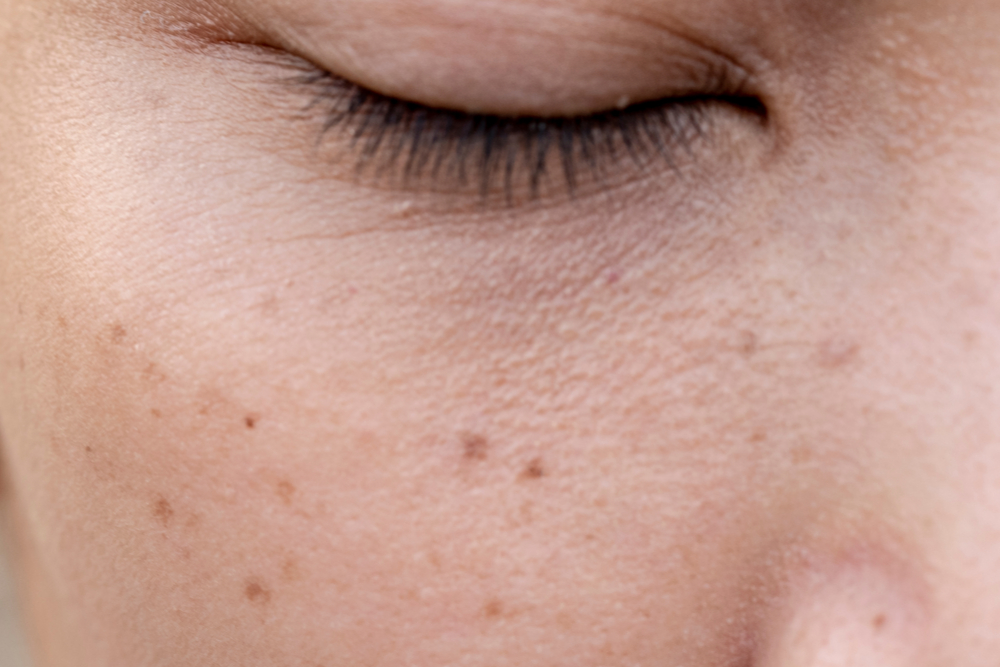- Emollients are common, over-the-counter skin care products that help retain moisture.
- They’re usually combined with humectants or products that help attract water.
- If you have dry skin or suffer from eczema or psoriasis, emollients should be a part of your regular skincare routine.
Emollients are a class of substances that soften dry or damaged skin by sealing in moisture. They’re usually made with fats or oils, many of which come from natural sources.
Here’s what you need to know about this common skincare product, along with some recommendations on its use.
How do emollients work?
“The main goal of emollients is to prevent dryness, cracking, and inflammation of the skin by restoring the skin barrier,” explains Dr. Paul Yamauchi, a Santa Monica-based dermatologist.
Emollients are not particularly controversial products. The vast majority of them can be purchased over the counter, and the side effects they may cause are minimal and few. Some common emollient ingredients include shea butter, petroleum jelly, lanolin, or cocoa butter.
While the terms are often used interchangeably, ‘emollients’ and ‘moisturizers’ are not the same things. Emollients don’t actually add moisture — instead, they act as a protective film on the skin.
When used in moisturizers, emollients are often combined with humectants, such as urea, glycerin, or hyaluronic acid, which draw water from the atmosphere. When working in unison, these products prevent water loss and draw extra moisture into the skin.
Types of emollients
Emollients are meant to be left on the skin and in some cases, re-applied throughout the day. Some of these products are light while others can feel very greasy — each formulation serves a specific purpose.
Dr. Yamauchi breaks down the general categories:
- Lotions contain more water and less oils than creams. They are lighter and can be useful for hairy areas of the body and to resolve mild dryness.
- Oils spread easily on the skin to reduce water loss, which is why people prefer oil for larger body surfaces.
- Creams contain a mixture of oils and water. They are light, non-staining, and do not feel greasy.
- Ointments are very greasy and are very effective at locking moisture into the skin. They’re useful for very dry, thick, scaly areas on the skin.
In addition to leave-on emollients, there are emollient soap substitutes like bath oils, shower gels, and aqueous creams. Soaps can often be too harsh on the skin, so these replacements are very useful for people who suffer from eczema, psoriasis, or generally have sensitive skin.
Dr. Yamauchi offers some broad guidelines for choosing an emollient based on your skin type.
“In general, creams are sufficient for mild-to moderate dryness, while ointments are more effective for extremely dry and thickened skin,” he says. “For oily skin, lotions may be preferable because they contain more water and less oils.”
When choosing an emollient, the deciding factors will be related to the problem being treated as well as personal preference.
Emollients and skin conditions
If you suffer from psoriasis or eczema, emollients should be one of your first lines of defense.
“The use of emollients represents an accepted standard therapeutic approach for the treatment of skin conditions, such as psoriasis and eczema, and there are no known contraindications,” Dr. Yamauchi confirms. “They can also prevent flare-ups when applied on a continuous basis.”
When combined with a topical steroid, emollients have a strong effect on eczema symptoms, especially itchiness. For those who suffer from ichthyosis, a condition in which skin becomes extremely dry, rough and scaly, an emollient can be used in combination with urea.
Instructions for use
Since emollients are generally safe, you can apply them up to three to four times per day, depending on the severity of your condition.
Emollients can be absorbed into the skin, metabolized or rubbed off during contact with other surfaces. To reap the most benefits from your emollient, follow these guidelines:
- Apply an emollient as soon as you’ve finished bathing as this is when your skin will retain the most water.
- When applying the emollient, rub it in the direction of the hair growth in one motion. Avoid rubbing it up and down as this may clog the hair follicle.
- Feel free to use the emollient on your face as long as it isn’t too greasy.
- Don’t skimp in your application of the emollient. It’s not uncommon to use a 16-ounce container per week while dry skin or other skin conditions exist.
Potential side effects
As mentioned, negative side effects are not common with emollients. However, in rare instances they may cause the following reactions:
- Burning and stinging, especially for people with sensitive skin
- An allergic reaction, which can be due to a preservative or fragrance included in the emollient
- A breakout of acne-like rash called ‘folliculitis’ where the hair follicles become occluded by the emollient
To avoid skin irritation, dermatologists recommend using an emollient that is free of fragrances and preservatives.
Recommended products
Dr. Yamauchi has several emollient products he recommends that we have included here. For more options, ask your healthcare professional as they may have their own preferred brands.
- Cetaphil Moisturizing Cream combines emollients and humectants in a non-greasy cream to help any skin type remain moist and soft. Among its ingredients, it contains glycerin as a humectant as well as petroleum jelly and almond oil as emollients.
- Cerave is an emollient cream that relies on ceramides — lipids that naturally exist in skin cells — and hyaluronic acid. Combined, these products act together to moisturize skin and keep the moisture locked in.
- Aveeno offers a number of useful emollient products. Chief among them is their Skin Relief Intense Moisture Repair Cream, which includes oat flour, shea butter, petroleum jelly and ceramide. For extremely sensitive skin, the company has created the Dermaxa Emollient Soothing Cream, which is specifically formulated for skin that is sensitive to atopic dermatitis. Both of these products are fragrance-free.
- Eucerin is another cream that can be useful for very dry skin. It has a heavy feel to it and contains castor seed oil, mineral oil and glycerin.
- Aquaphor is an ointment that is designed to heal extremely dry skin. It relies on a heavy dose of petroleum jelly, panthenol (an emollient and the precursor to vitamin B5), and glycerin to help repair cracked and damaged skin.
» If you are looking for an additional therapy to help moisturizers and topical steroids penetrate the skin, you can try wet wrapping treatment.
Find the right match for you
Because emollients like moisturizers are very safe if used correctly, they can be a good part of any skincare regimen. Not only do they soothe and prevent skin conditions, they also help skin retain a youthful appearance by keeping its moisture content consistent.
Find one you like, or ask your doctor or dermatologist to recommend a product that works for your skin type.
» For more advice on choosing the best emollients, use Zwivel’s online consultation tool to contact a board-certified dermatologist in your area.









